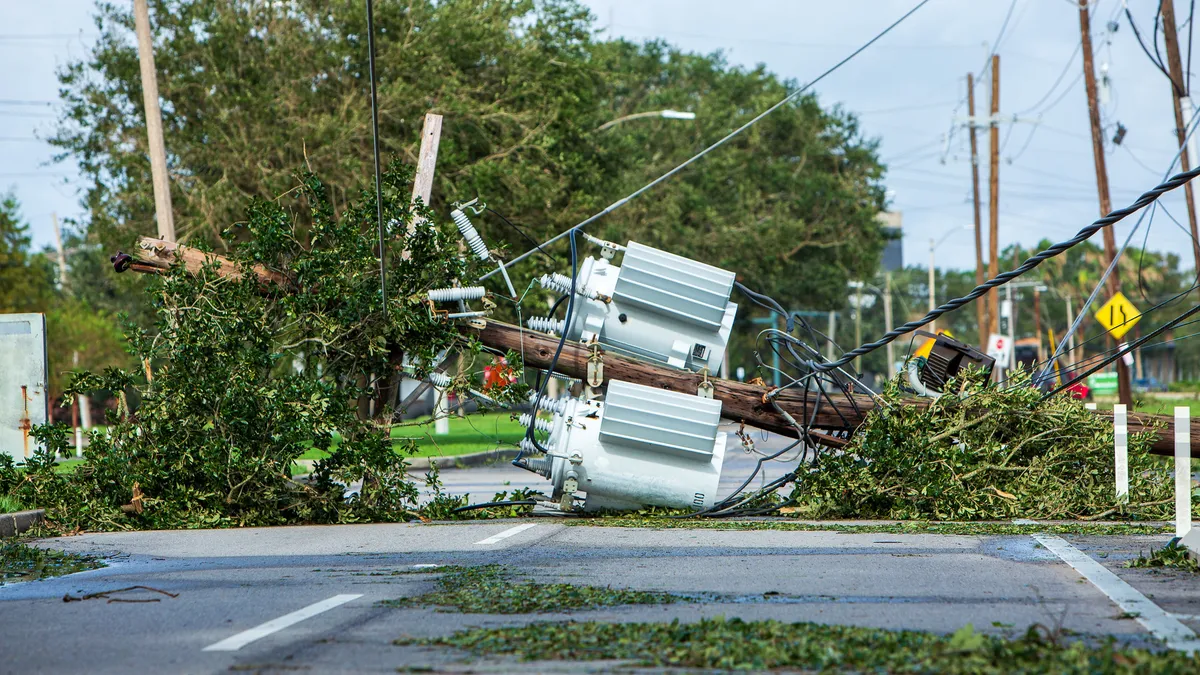Dive Brief:
- Hurricane Ida knocked out all eight transmission lines feeding power into New Orleans over the weekend, and with its 150 mph winds also toppled a 400-foot tower that experts say will complicate efforts by Entergy, the regional utility, to restore power.
- The collapsed tower will be difficult to replace or repair quickly, said Joshua Rhodes, research associate at the Webber Energy Group at the University of Texas at Austin. "It is a massive piece of infrastructure," he said.
- The hurricane and the devastation it wrought in New Orleans is just the latest in a series of "wakeup calls" that should focus national attention on modernizing and strengthening an increasingly aging electric grid, said Larry Gasteiger, executive director of WIRES, an industry trade association which advocates for the expansion of high voltage transmission infrastructure.
Dive Insight:
In addition to the eight major transmission lines leading into New Orleans, Ida put out of action more than 200 other smaller lines and 216 substations, Entergy said in a statement Monday morning.
All told, more than 2,000 miles of transmission lines were put of service by the hurricane, the company said, as it worked its way across Louisiana and into Mississippi. As of Tuesday morning, more than 791,000 Entergy customers in Louisiana and more than 25,000 of its customers in Mississippi were affected by the outages, according to the utility's maps.
Still, the transmission tower that collapsed could be one of the more difficult pieces of the puzzle for Entergy to put back, Rhodes said. The "destroyed tower" had withstood Hurricane Katrina in 2005, Entergy noted in a news release.
"It's like a 400-foot-tall tower," Rhodes said. "It is a massive piece of infrastructure – they are going to have to rebuild the tower and restore the lines that go through it. It will depend on whether they have a spare tower lying round or the metal to build one. ... A tower of that size is not normally kept in reserve."
Gasteiger offered a similar assessment. "If you are looking at a major piece of transmission going down, it could be an extended period of time to get things replaced," he said.
Ted Kury, director of energy studies at the Public Utility Research Center at the University of Florida in Gainesville, said estimates of three to six weeks to completely restore power from Ida "seem like a reasonable time frame."
Much will depend on what pieces need to be replaced on the tower, or whether it is a total loss, Kury said. "When a transmission tower comes down, that is a lot more complicated," he said.
The aftermath of Ida, in turn, could stir discussion in Louisiana and the Gulf region about potentially burying lines underground to make them less vulnerable, Kury said. Florida began a process of gradually putting lines underground, when the individual cases merit it, after being slammed by 10 hurricanes in the mid-2000s, he noted.
Gasteiger, the head of WIRES, said that Ida is just one of a number of emergencies, including the Texas ice storm and California wildfires, that highlight the need for a major overhaul of the nation's electric grid.
Much of the infrastructure currently dates to the 1950s and 1960s, he noted.
"We have a significantly aging set of infrastructure," Gasteiger said. "It is reaching a vintage where you have to assess whether you can continue to do repairs or actively replace it with newer and hopefully more resilient infrastructure."














